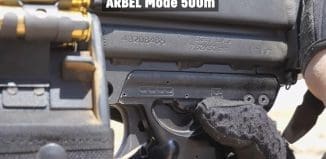New Tactical Radio Capability for Urban Environments and Tunnels
This post is also available in:  עברית (Hebrew)
עברית (Hebrew)
The US Army has found a way to break through certain limitations in its Soldier Radio Waveform (SRW), which is the present go-to format for tactical communications. By its nature, SRW can only scale up for use by 30 or 40 individuals in a user group. Because a brigade operation may need dozens of SRW devices to support its operations, users may be limited to voice and a very small amount of data throughput. This means a platoon might be able to convey basic location information, for example, but richer data including imagery and video wouldn’t make it through.
Thales has begun delivery on a $37 million order for a tactical radio that the US Army says will significantly improve how soldiers communicate in the field. The contract refers to the company’s dual-channel AN/PRC-148C Improved Multiband Inter-Intra Team Radio (IMBITR), a two-pound handheld radio that provides voice and data capability for both the dismounted user and mounted vehicle configurations, according to c4isrnet.com.
The company says it has overcome some of the constraints around SRW by introducing a new wave form, the Tactical Scalable MANET (TSM), developed in partnership with TrellisWare Technologies. By utilizing this approach, “the solution can now scale to 200-plus nodes per network, thus preventing the spectrum challenges that were associated with SRW, while also ensuring that the voice and data channel can further support position location information, chat functionality and streaming video,” said Gary Kidwell, Thales Defense & Security business development director.
“Thanks to the new approach, users can operate in much more challenged environments. It means you can have larger networks that provide voice, video and data in all environments including urban environments, caves and tunnels, and in buildings,” Kidwell said.
“This suite of radios will provide SFAB [security force assistance brigades] combat advisor teams with inter-team and reach back communications and data situational awareness capability as they perform their missions,” said Paul D. Mehney, a spokesman for U.S. Army Program Executive Office – Command, Control, Communications and Tactical.





























